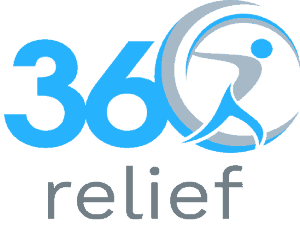
Make This Christmas Pain-Free: 10% Off on Supportive Wear!
Holidays are coming, which means that let’s welcome them with joy, laughter, and, of course, some comfort! At 360 Relief,

Any skier would tell you that their favourite annual holiday is skiing. It’s an enjoyable and exhilarating sport that takes place in the stunning mountains.
As the ski season approaches, skiers and snowboarders are eager to get out on the slopes and leave their first tracks of the year. Remember that a day on the slopes may be dangerous. Here are the 10 tips to keep in mind before your ski trip to avoid a trip to the emergency room.
Table of Contents
ToggleSkiing or snowboarding is a demanding activity, so don’t underestimate how exhausting it may be. Regardless of your level of skill, choose your runs carefully and gradually progress to more difficult trails. Many injuries occur when you are more exhausted, but they can be avoided by resting, when you are tired. To be ready for the slopes, you might want to take some preparatory or refresher training.
You’ll be safe and comfortable in practically any weather if you dress appropriately. Make sure you carry appropriate clothing for your first ski experience. The three-layer technique is usually the most effective. The base layer that is designed to drain sweat away from your body which keeps you dry. The mid layer is used to keep you warm by controlling your body temperature
(typically a fleece or wool jumper). To break the wind and keep moisture off your second layer, the outer layer should either be a waterproof or a windproof jacket.
It is vital to always be aware of your surroundings. The better a skier or snowboarder is, the more time he or she has to look. Skiing out of control is the most common cause of the collision. The second reason is that skiers fail to follow a simple rule: always look uphill before starting out. Remember that snowboarders take a different path down the mountain than skiers and may be unaware of your presence on the turn.
You’ll probably get altitude sickness if you travel from a flat state to a hilly location. The symptoms include confusion, shortness of breath, severe headache, nausea, vomiting, weariness or poor sleep, as well as loss of balance, energy, or loss of appetite, it often feels like a hangover. The first one, in particular, has the potential to make skiing deadly.
Rest, returning to a lower altitude, limiting your activity level, and taking ibuprofen for the headache are some of the strategies to manage altitude sickness. It’s also a good idea to take your first day off the slopes to allow your body to adjust.
Despite all of the cautions, many skiers often venture off the groomed routes without the assistance of a guide. It may not be dangerous to do in unstable snow conditions, however early snow should be avoided due to tree stumps and rocks. Skiing in crevassed glacial terrain without a guide, on the other hand, is a recipe for disaster.
It may seem illogical to believe that you may become dehydrated when skiing, but multiple factors, including thin air at high altitudes, sunlight, and continuous exercise, all contribute to dehydration. Even slight dehydration can impair your physical capability, increasing your risk of injury. Before, during, and after skiing, drink plenty of nonalcoholic fluids and keep yourself hydrated.
Skiing is a fantastic winter sport that provides the ideal combination of physical activity and beautiful surroundings. However, like with any extreme sport, there are measures to take if you want to enjoy the slopes for many years to come – and this is where the advantages of skiing braces come in.
Each hop and twist in the snow exerts strain on your joints, which can then lead to long-term injury or discomfort. Braces & Supports for skiing can help you relax and enjoy your time on the slopes by giving additional control and support to the major ligaments.
While skiing can be enjoyed by people of all fitness levels, the fitter you are, the faster you will learn and the more you will enjoy yourself. You give yourself the best chance of enjoyment in the mountains if you arrive fit and healthy.
Regular cardiovascular exercise in the weeks leading up to your trip will be extremely beneficial to you. It’s also crucial to remember your stretches, and to include yoga in your workout routine as it will be very beneficial.
Whether you’re skiing off-piste with a guide or not, you’ll need an avalanche transceiver, a foldable three-metre probe, and a shovel, as well as a good understanding of how to use them. Every year, Schniewind recommends a two- or three-hour practical training session with safety equipment, as well as a refresher course. A backpack with an integrated avalanche airbag system is another option. A huge balloon, or balloons that inflate when a string is pulled, is designed to make the person wearing it larger, allowing them to naturally rise to the snow’s surface.
Whatever you do, don’t give up skiing before you’ve given it your all. Everyone fails while learning, and you may wonder if all of your efforts are worthwhile. Dealing with everything might make even the most seasoned skiers wish they were lying on a beach in the sun. However, after you’ve mastered the learning curve, you’ll be rewarded with amazing experiences for the rest of your life and will be able to enjoy the best sport on the planet.

Holidays are coming, which means that let’s welcome them with joy, laughter, and, of course, some comfort! At 360 Relief,

Happy Cyber Monday to everyone; it is a perfect occasion for 360 Relief to offer a special discount of 10%

This Black Friday, take advantage of exclusive 10% savings on some of 360 Relief’s best-selling compression socks and support braces!

Everyday life includes walking up stairs, but knee discomfort can make this basic activity difficult. Walking up or down stairs

Cooking is a beloved activity for many, but for those struggling with knee pain, standing in the kitchen can quickly

We’ve all been there. On a ride in a car, for instance, to the country home for a weekend break

Gardening is enjoyable for many people and those who like tending to their lawns and plants usually find it therapeutic

Do you have a painful knee problem that takes you to physiotherapy…for an injury that hampers your daily living…your workout

Training can be very much associated with some pains and injuries that may be experienced by the trainers. As there

Office workers often spend hours seated at their desks, focusing on tasks while unknowingly putting their health at risk. The

Winter often brings more than just a change in weather; for many, it also means dealing with unexpected swelling in

Compression socks have become a critical tool for athletes across all sports. Whether you’re a marathon runner, cyclist, or weightlifter,

October marks the beginning of National Cholesterol Month in the UK, a time dedicated to raising awareness about cholesterol and

Overall, there is nothing to match the experience of watching musicians perform live in an outdoor concert in Glastonbury. However,

Today charity runs have gained popularity as a way of raising cash for a cause in the United Kingdom. From
Please enter your email to subscribe to our newsletter for exclusive offers and updates
Copyright © 2025 | 360 Relief Ltd | Sitemap

